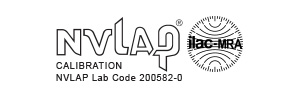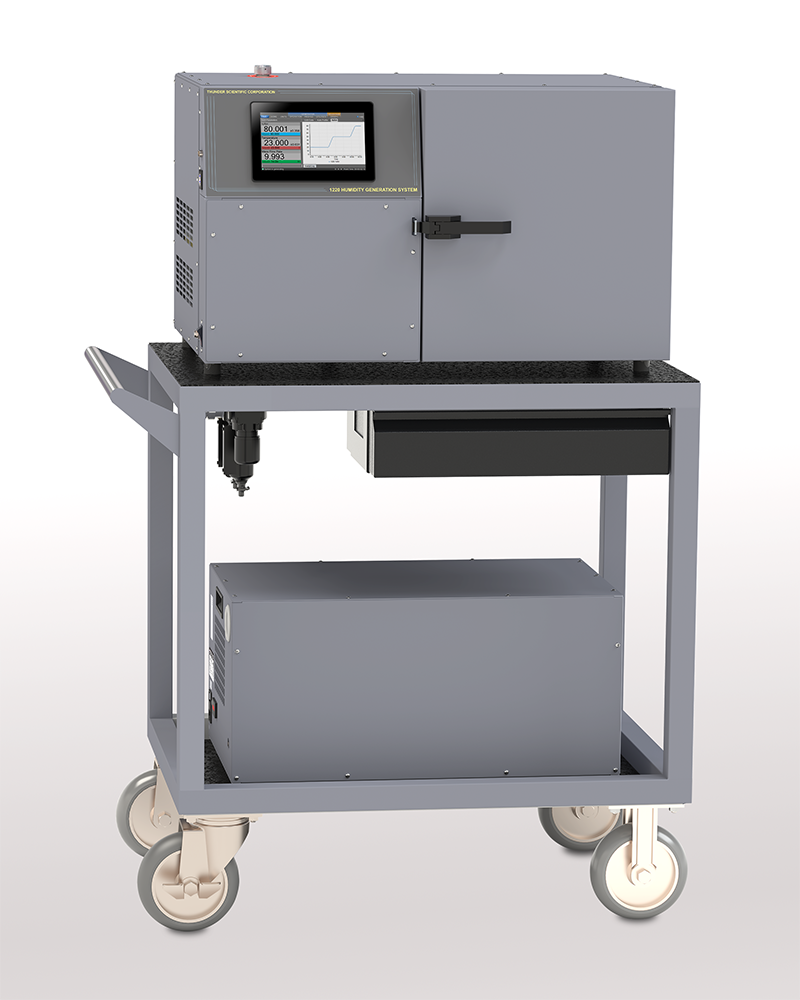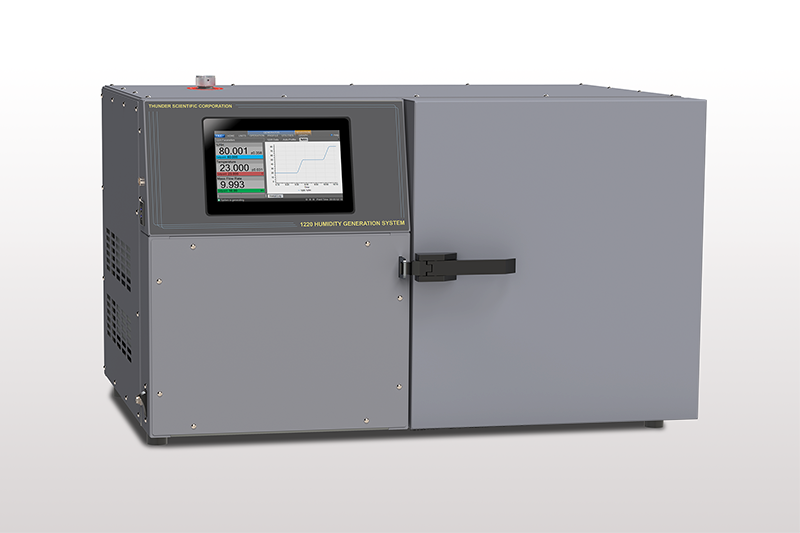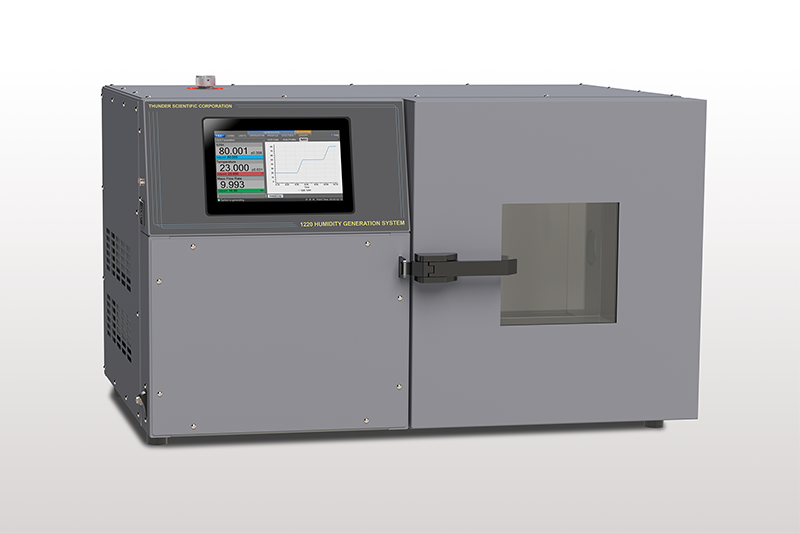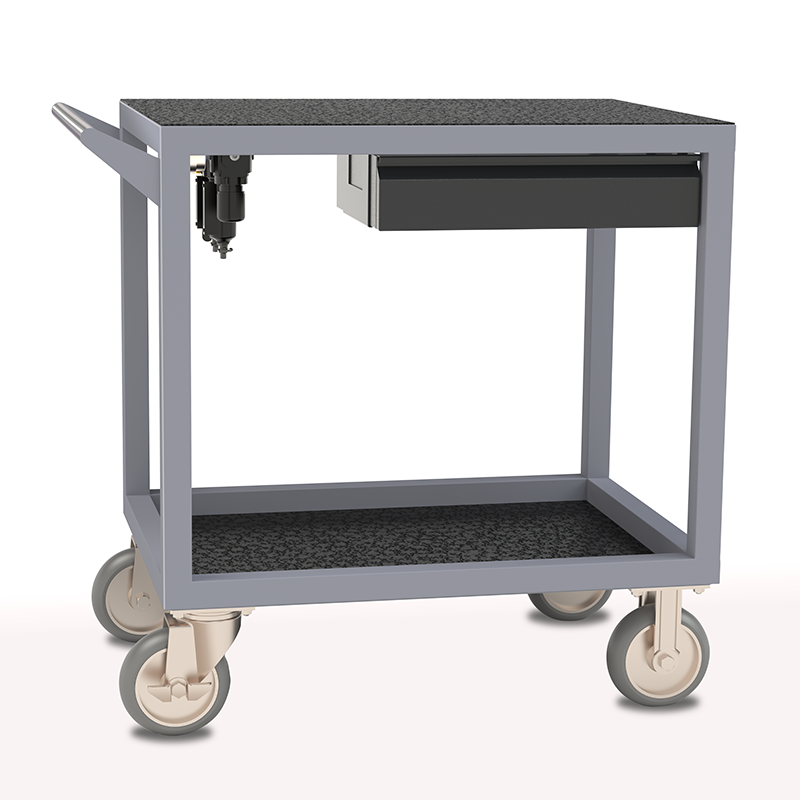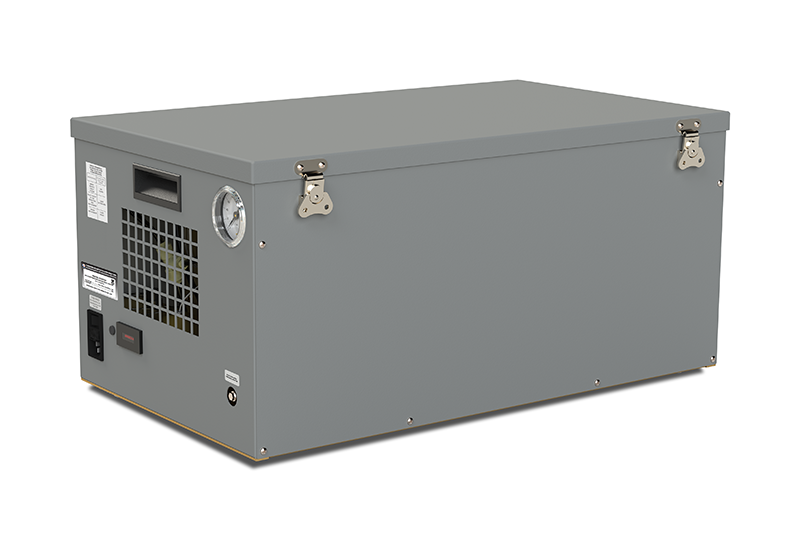FEATURES
- Traceable to SI 1
- 0.6% of Reading RH Uncertainty 6
- No Refrigerants - Thermoelectric Cooling/Heating
- Based on NIST Proven "Two-Pressure" Principle
- ControLog Embedded Automation Software
- Automatically Applies Enhancement Factors
- HumiCalc with Uncertainty Mathematical Engine
- Generate: RH, DP, FP, PPM, Multipoint Profiles
- Test Chamber 8" x 8" x 8"
- Flow Capability of 20 L/min
- Multi-point Touch Display
- Window Door Option Available
Get Software
1 Traceable to the International System of Units (SI) through a national metrology institute (NIST) recognized through a CIPM MRA.
6 Chamber pressure at 1 atmosphere, Uncertainty values represent an expanded uncertainty using a coverage factor, k=2, at an approximate level of confidence of 95%. Uncertainty is not specified at flow rates below 10 L/min. Uncertainty is based on the worst-case value from the 1220 uncertainty analysis.
SPECIFICATIONS
UNCERTAINTY 6
| RH Uncertainty: 10 to 95 %RH, 5 to 60 °C, @ 20 L/min | 0.6% of reading |
| RH Uncertainty: 95 to 98 %RH, 15 to 60 °C, @ 10 L/min | 0.6% of reading |
| Dew/Frost Point Uncertainty: < 0.01 °C, @ 20 L/min | 0.05 °C |
| Dew Point Uncertainty: 0.01 to 58 °C, @ 20 L/min | 0.08 °C |
| Temperature Uncertainty: 5 to 60 °C | 0.031 °C |
| Saturation Pressure: Ambient to 160 psiA | 0.037 psiA |
| Test Chamber Pressure Uncertainty: Ambient | 0.007 psiA |
| Saturation Pressure Specification: | 0.02% of full scale |
UTILITIES
| Electrical Power: | 100-240 V~, 5 A, 50/60 Hz |
| Gas Supply (External): 7 | 160 psiG @ 20 L/min |
ENVIRONMENTAL
| Operating Temperature: | 15 to 30 ºC |
| Storage Temperature: | 10 to 50 ºC |
| Humidity: | 5 to 95% Non-condensing |
2 The system will limit mass flow rate to 10 L/min at %RH greater than 95.
3 Only the water heat transfer fluid circulating around the chamber is controlled to setpoint. Chamber temperature inside the chamber may vary depending on door configuration, setup, and uniformity.
4 Temperature Control Stability is defined as the standard deviation over a 10-minute period, as measured by the saturation temperature control sensor after being at point for 60 minutes.
5 Chamber Temperature Uniformity is defined as the maximum temperature difference between any two locations at a single point in time. Locations are within two inches of the chamber wall and chamber door. The chamber inlet was directed toward the center of the door using a 90° stainless steel tube.
6 Chamber pressure at 1 atmosphere, Uncertainty values represent an expanded uncertainty using a coverage factor, k=2, at an approximate level of confidence of 95%. Uncertainty is not specified at flow rates below 10 L/min. Uncertainty is based on the worst-case value from the 1220 uncertainty analysis.
7 Regulated supply pressure lower than the recommended 160 psiG is acceptable but may limit the lowest humidity obtainable from the generator and will require an internal pressure regulator (REG) adjustment.
PRINCIPLE OF OPERATION
The “two-pressure” humidity generation process involves saturating air or nitrogen with water vapor at a known temperature and pressure. The saturated high-pressure air flows from the saturator, through a pressure reducing valve, where the air is isothermally reduced to test pressure at test temperature. Humidity generation is dependent on the measurement of temperature and pressure, not on the amount of water vapor measured in the air. System uncertainty is determined by the temperature and pressure uncertainties, and on the stability and uniformity of the measurements. When setpoint equilibration has been reached, the indication of saturation temperature, saturation pressure, test temperature, and test pressure, are used in the determination of all hygrometric parameters.

Elemental Schematic of the 1220 generator.
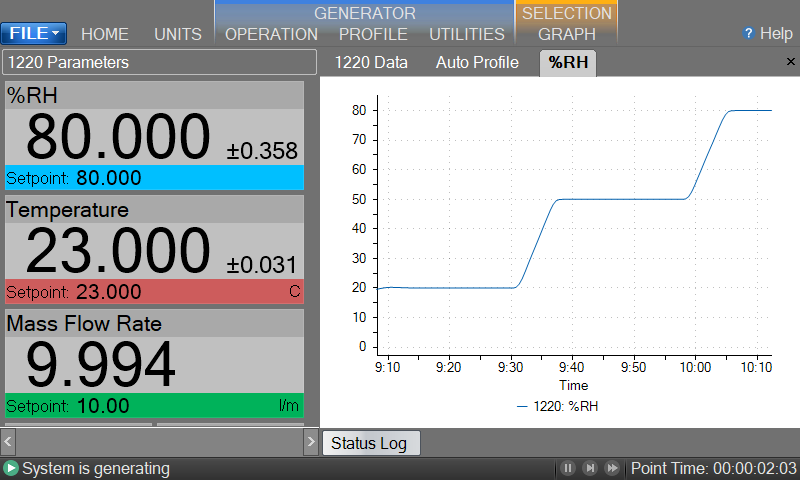
1220 Main Control Screen
COMPUTER/CONTROL SYSTEM
The 1220 Humidity Generation System encompasses a high-performance stand-alone Control System that performs all functions required for humidity generation and control. The Control System employs 24 bit I/O modules with integrated signal conditioning to acquire data and uses USB and serial interfaces to transducers and stepper motors to control the operation of generating humidity.
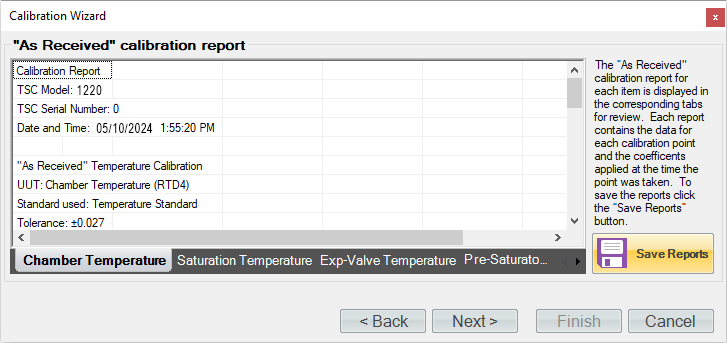
Temperature Calibration Coefficients Screen
Temperature Calibration Screen
Temperature Control: Ultra stable temperatures are attained through solid-state thermoelectric cooling and heating of a circulating fluid that jackets the test chamber and associated humidity generation components. Chamber and saturation temperatures are governed by this medium which is computer controlled at values between 5 °C and 60 °C using PID (proportional-integral-derivative) algorithms.
Pressure and Flow Control: Pressure control and mass flow control are accomplished through computer actuation of electromechanical valve assemblies. Saturation pressure and mass flow are measured continuously and controlled using PID algorithms similar to those employed in temperature control.
Calibration: Proper calibration of the temperature and pressure transducers ultimately determines the accuracy of the generator. The humidity generator employs an integrated software calibration scheme allowing the 1220’s probes and transducers to be calibrated while they are electrically connected to the humidity generator. Coefficients for each transducer are calculated by the computer and stored to memory.
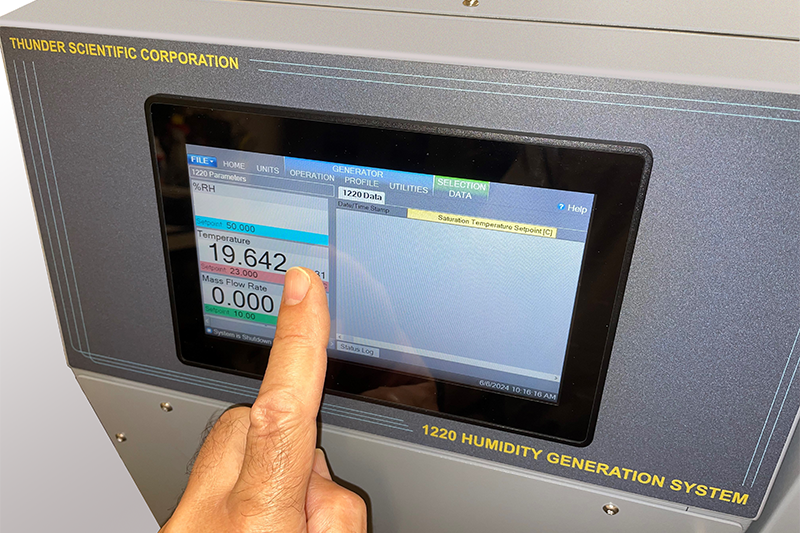
1220 Touch Screen
CONTROLOG FEATURES
ControLog is an embedded software application that fully automates the operation of the 1220 Humidity Generation System and allows various device connections through a number of different interfaces. ControLog uses Thunder Scientific’s HumiCalc with Uncertainty as its mathematical engine for computing all humidity values and real-time uncertainties. Data from the generator and attached devices is automatically retrieved and stored for viewing in either numerical or graphical format in real time or post process. Data can be transferred off the system via a USB drive for further viewing, post processing and printing using an external PC.
Key features of the of the ControLog software are:
- Data: ControLog stores data into individual data sheets (tab). Each data sheet contains a spreadsheet type view that consists of a date/time stamp and the measured data items corresponding to that date/time stamp. Data sheets consist of three similar but different types: Device Data, File Data and Data Summary. Each type has the same spreadsheet type view and operation, but all three have different data sources.
- Graphing: Graphing is a powerful tool used to view previously recorded data or to monitor the current data in real-time. The graph works hand in hand with the data sheets. While the generator is in operation, data sheets store the most recent data points from the generator and or connected devices at the desired interval. A graph can be used to create a visual picture of this stored data.
- Profiling: The Auto Profiling feature is very similar to the Generate mode with the main exception that profiling relies on a predefined list of setpoints referred to as a profile. The user configurable profile is used as ControLog’s road map during Auto Profile operation. It defines which setpoint values to go to, at what rate to go from one setpoint to another, and how long to stay at a specific setpoint before moving to the next setpoint.
- Device Interface: ControLog supports a customizable interface that works with most devices. ControLog will allow the user to create a new device connection using the “Connection Wizard” or open previously saved connections. The wizard will open a separate dialog window containing various steps that will guide the user in defining the communication required to receive the desired data items from the device. The user can create as many (up to 60) or as few data items as they see fit for any one device. Each data item can be uniquely named and once connected will be recorded in its own data sheet. ControLog also allows the user to save these interfaces for future use.
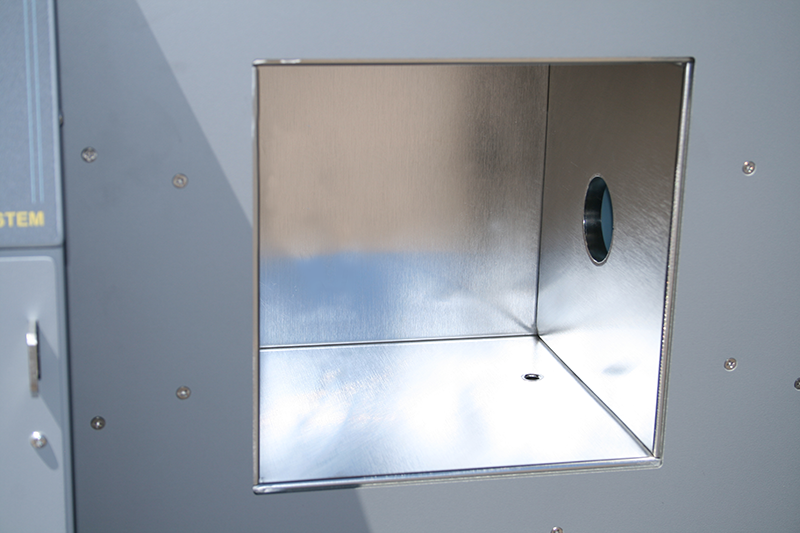
1220 Test Chamber
TEST CHAMBER
The 1220 Humidity Generation System incorporates a fluid jacketed test chamber with internal dimensions of 8” (203 mm) x 8” (203 mm) x 8” (203 mm).
APPLICATIONS
Virtually any humidity and temperature may be generated within the operational limits of the generator. The output or recording of the device under test may then be compared with the generator’s data for analysis.
Chilled Mirror Hygrometers: Install the actual chilled mirror head into the chamber or insert a sample tube through the test port and draw a sample through the chilled mirror head to: verify mirror temperature measurement calibration when the hygrometer is in thermal equilibrium with its environment; perform operational checks of the heat pump and optical components before and after mirror cleaning and balancing; determine whether the hygrometer is controlling the mirror deposit in the liquid phase or ice phase when operating at dew and frost points below 0 °C; determine if the hygrometer is correctly calculating other humidity parameters; determine hygrometer’s repeatability, stability, and drift characteristics.
Humidity Sensors and Data Loggers: Insert humidity probes through a test port in the chamber or install the sensing systems into the chamber to: determine humidity calibration accuracy and/or characterize humidity sensitivity by subjecting the humidity sensor to a variety of humidity levels; perform operational checks such as the sensing systems capability to correctly calculate and display other humidity parameters; determine the repeatability, stability, hysteresis, and drift characteristics of various humidity sensing systems.
Environmental Testing: The 1220 can serve as a test bed for evaluation and R&D of humidity sensors, humidity sensing systems, and humidity sensitive products, e.g., polymers, composites, film, magnetic medium, pharmaceuticals, soil hydrology, consumables, electronics, optics, etc.
REFERENCE DOCUMENTS
Model 1220 Humidity Generation System Documents
Series 1220 operation and maintenance manual for the automated two-pressure humidity generator.
Supplementary Documents for This System.
Model 1220 Uncertainty Analysis
This document describes a complete uncertainty analysis of the Model 1220 in accordance with NIST Technical Note 1297. Each error source is identified, quantified, and combined to form an expanded uncertainty using a coverage factor, k=2, at an approximate level of confidence of 95%.
Note: The specifications listed, and the information provided are subject to change without notice.
![]() one 1.875” diameter port located on the right side, for probes, cables, sample tubes. The test chamber accommodates various solid-state sensors, sensing systems, chilled-mirror hygrometers, as well as material samples for environmental testing. Virtually any humidity and temperature may be generated, for long periods of time, within the operational limits of the generator. The output or recording of the device under test may then be compared with the generator’s data for analysis.
one 1.875” diameter port located on the right side, for probes, cables, sample tubes. The test chamber accommodates various solid-state sensors, sensing systems, chilled-mirror hygrometers, as well as material samples for environmental testing. Virtually any humidity and temperature may be generated, for long periods of time, within the operational limits of the generator. The output or recording of the device under test may then be compared with the generator’s data for analysis.